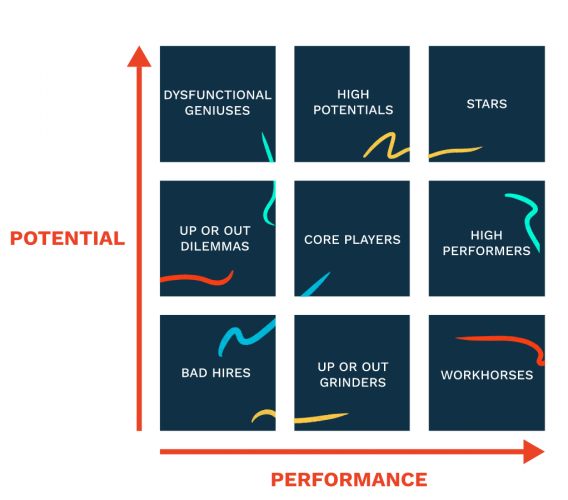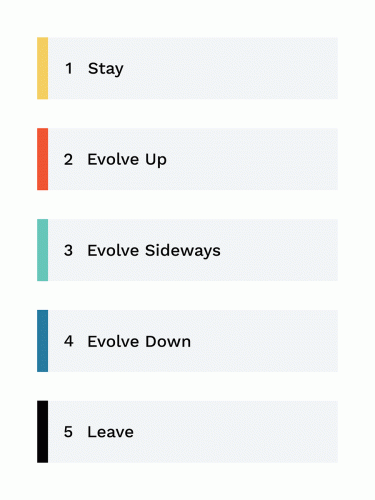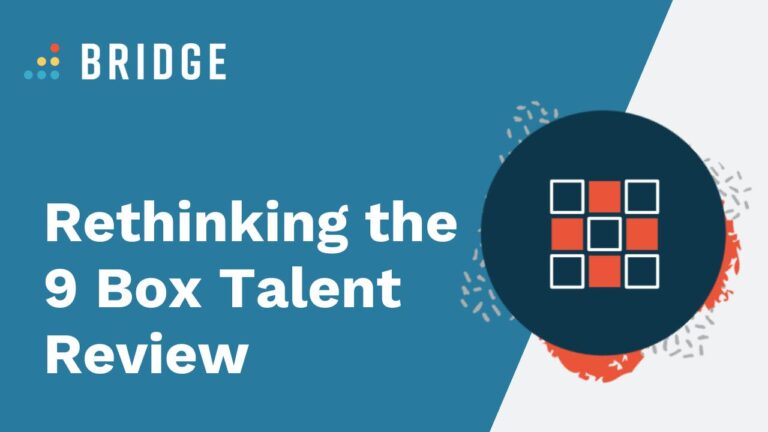What Is a Talent Review?
If you’re looking to get an overview of where your employees are at, what they’re contributing, and how much more they have to offer to your organization, you’ll want to supplement your performance management process with talent reviews.
Traditionally achieved by assessing employee performance and potential to identify high performers and future leaders, talent reviews are a great way to gain a comprehensive view of where the talent lies and how it can be developed among your people. And, with LinkedIn’s 2022 Workplace Learning Report noting that 72% of L&D programs are focusing on upskilling and reskilling, there’s never been a better time to understand which employees need which skills to grow and thrive.
We now live in a working world dominated by displaced teams. In fact, McKinsey research suggests that 58% of American workers are able to work remotely at least once per week. As a result, business leaders should be more motivated than ever to gain a good perspective on the spread of talent across their workforces—even when their people are out of sight.
This renewed need for strong talent reviews doesn’t mean you have to stick to the standard approach. Read on to discover how (and why!) talent review practices are evolving.
Why Are Talent Reviews Important?
Don’t fall into the trap of assuming that talent reviews are just about identifying individuals who aren’t pulling their weight! While a good talent review will absolutely find mismatches between performance and potential, the process is better understood as a way to inspire growth among your people, filling in any talent gaps while recognizing those who go above and beyond.
After all, if you don’t have a clear understanding of who’s performing well, you won’t be able to reward their hard work—and you’ll risk losing them to an organization that will. Given that 48% of working Americans were looking for a new job in 2021, these possible threats to employee retention need to be taken seriously.
At the same time, a firm grasp of which employees display the most potential could inform your hiring decisions and succession planning: if a position needs filling, you’ll know which internal candidates will fit the bill, or which ones could step up with the right training.
Taking a broader view, your ability to find and address talent gaps while developing strong performers will have great implications for organizational growth as your people become better equipped and more productive—provided you’re approaching talent reviews the right way.
MORE ABOUT SUCCESSION PLANNING | ‘Succession Planning: A 6-Step Strategy for Success’
The 9-Box Talent Review Explained

Developed way back in the 1970s by management consultancy firm McKinsey & Company, the 9-box system has been thought—until recently—to be the final word in employee performance measurement and visualization.
It’s easy to see why the 9-box is so popular: it’s a simple three-by-three grid with two axes denoting performance and potential. If a given employee is considered to have significant potential, they’ll be elevated to a high position, while those with good performance will find themselves somewhere on the right-hand side of the grid.
Rethinking the 9-Box Talent Review
Even today, there’s still plenty to be said in favor of McKinsey’s matrix. For one thing, it’s a simple and elegant way to visualize your people’s performance. For another, this kind of consistent approach to performance criteria and categorization will make sure employees and managers are on the same page. That’s why our performance management software still includes a 9-box visualization option for your talent reviews.
On the other hand, the 9-box system isn’t for everyone. There’s been growing opposition to this approach in recent years. This opposition largely focuses on three potential drawbacks:
1) Subjectivity
It’s easy for some managers to assign employees a box on the grid based on thoughts and feelings rather than on hard performance data. This can lead to workers sitting in boxes that don’t necessarily line up with reality.
2) Stagnation
Getting placed in a box is one thing—but, for some employees, the process can feel more like getting boxed in. When an employee is assigned a place on the grid, it can be interpreted (by workers, managers, or both) as a statement describing their intrinsic, unchangeable characteristics, as opposed to a position from which they can grow and improve.
3) Stress
The problem isn’t just that employees can get boxed in, but that they know how difficult it can be to break out of their particular box. With career progression on the line, this can leave employees feeling disheartened and unable to work at their best.
So, while the 9-box approach still has its place in the talent review landscape, the time is ripe for alternatives. Luckily, Bridge has you covered.
The Benefits of a Single-Axis Approach

While Bridge Talent Review users can still employ the standard 9-box system, they can now opt for a single-axis view instead.
In this scenario, business leaders can answer a range of fully customizable questions about each employee’s developmental direction and view the results in the form of a single-axis bar chart. You’ll be able to see, for example, what percentage of employees have been assigned to each of your custom categories depending on the answers you supplied.
Through the single-axis methodology, you’ll be in a better position to compare your people with their real performance—rather than to one another.
More broadly, by moving away from a box-based visualization of talent, you’ll humanize your people. Real development begins by emphasizing to your employees that their current category is a starting point to grow from—not a box to be kept in.
FURTHER READING ON PEOPLE-FIRST APPROACHES | ‘Unlock Your Employees’ Potential With People-First Managers’
How a Performance Review Aligns With a Talent Review
Choosing the right visualization for your talent reviews is important, but it’s far from the whole story. Arranging your data properly is only useful if that data is detailed, accurate, and up to date, which is hard to achieve for business leaders who hold private talent review meetings on an annual basis.
After all, your people aren’t static values in a box. They’re constantly growing and developing, while their energies are—like your organization itself—subject to changes in direction and priority. That’s why you’ll want to make sure your talent reviews are frequent, helping you to understand how your employees are doing in real time.
If you want your data to be comprehensive (as well as up-to-date), it’s also worth taking advantage of the performance reviews you run with individual employees. According to the CIPD, one of the biggest criticisms of performance reviews is that they’re not frequent enough, so it’s better to conduct them fairly often—much like your talent reviews.
These two processes can mutually inform one another, with performance reviews providing your talent reviews with recent, specific data on your people’s progress, and larger-scale talent reviews helping you to structure and shape the direction of your performance conversations.
RELATED READING | ‘Why Performance Reviews Shouldn’t Be a Once-a-Year Deal’
How to Conduct a Talent Review
So, what does a talent review actually look like?
The fundamentals are pretty straightforward. At heart, a talent review is just a meeting between business leaders to discuss employee potential and performance. Got an upcoming vacancy in your organization? Need to know who’s ready to step up to the plate? Your talent review discussions will give you a good idea of where your high performers are, and how to realize your people’s potential.
To make the most of your talent review meetings, you’ll need a strong sense of your people’s performance. In part, this means making sure the right leaders are assessing the right employees—after all, your sales leaders won’t necessarily have much insight into the hidden potential of your digital marketing team.
Maximizing the detail and accuracy of your talent review meetings isn’t just about listening to the right managers—it’s also about complementing those viewpoints with hard performance data. That’s why it’s so vital to conduct your talent reviews within your performance review platform, giving you all the employee information you need to make an informed assessment of where the talent lies—and where you can focus your skill and career development.
MORE ABOUT COMBINING LEARNING AND PERFORMANCE | ‘How Learning and Performance can Connect, Align, and Grow Your Organization’
How a Talent Review Can Close Skills Gaps
McKinsey has found that 87% of companies know they either have a skills gap or that they’ll have one within a few years—meaning that talent reviews have never had more utility. Let’s say you’ve got a vacancy for a leadership role, or that you’re thinking ahead via a succession planning process. Your talent review will enable you to work out which employee has the skills and potential to excel in that position—but it’ll also point you towards the skills your chosen employee needs to fully qualify for the job.
Combined with a robust learning management system LMS that gives your people the training they need to reach the next level, your talent reviews can close skills gaps by identifying exactly where those gaps are and providing a concrete rationale for filling them.
By expressing that rationale via a single-axis view, you’ll ensure that your people don’t feel boxed into their current talent category, encouraging them to take the next step on their career journeys and achieve meaningful growth.
Make Your Talent Reviews Matter With Bridge
Bridge’s performance management tool empowers you to create a refined talent review process informed by data from across the entire Bridge suite of features. Simple to understand, fully customizable, and elegantly connected to the LMS that powers your people’s performance, Bridge’s Talent Review software helps you to place the human element at the heart of your employees’ ongoing development—and your organization’s growth.




